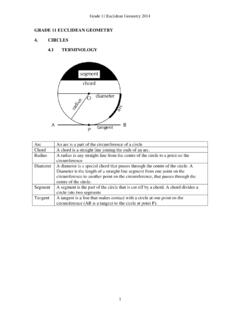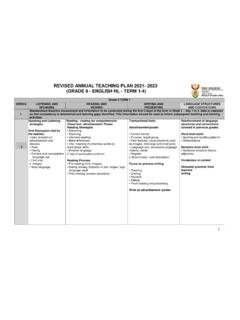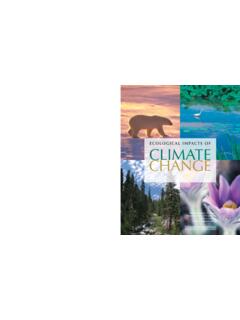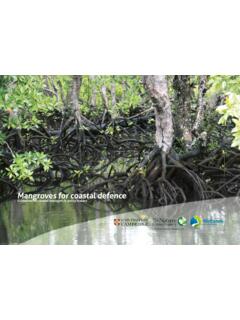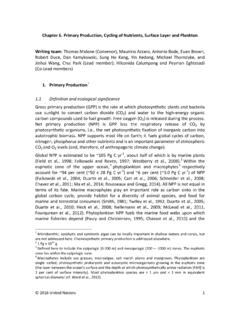Transcription of GRADE 8 TERM 1 GEOGRAPHY MAPS AND GLOBES 1. MAPS …
1 1 GRADE 8 TERM 1 GEOGRAPHY MAPS AND GLOBES 1. MAPS AND ATLASES Definitions: Globe: A round model of the Earth. Atlas: A book of maps. Satellite Images: Pictures of world taken from space. Introduction: Maps and GLOBES help us to see where we are in the world. Using maps has always been an important factor in the lives of human beings but, through the development of digital tools, maps are becoming more common-place, more detailed and more easily accessible. Applications such as Google Earth, Google Maps and car navigation systems are being used more often. In this section, you should learn the basics of how to use a map or atlas properly this is a skill that will benefit you for the rest of your life.
2 GLOBES accurately show us, in a smaller version, the correct position of the continents on Earth. Earth is one of eight planets in our solar system and it is the third planet from the sun. There are many different types of atlases. A world atlas contains map of different places in the world. A street atlas contains maps of streets in a settlement (city, town, village, etc.). A road atlas focuses on roads and routes between settlements. You will learn to use latitude and longitude to locate places on maps using the index in world atlas. Satellite images can help to forecast the weather, to make maps, to show damage caused by natural disasters and to examine how land is used.
3 LATITUDE AND LONGITUDE DEGREES AND MINUTES You should know from primary school that lines of latitude go around the world from east to west and that lines of longitude go around the world from north to south. Lines of Latitude: The Equator is the line of 0 latitude and is the starting point for measuring latitude. The latitude of the North Pole is 90 N and that of the South Pole is 90 S. Each line of latitude between the Equator and the Poles run parallel to each other and has a value in degrees. The angle of each line of latitude is measured from an imaginary point in the centre of Earth (Figure 1).
4 Two other important lines of latitude which will be dealt with later is the Tropic of Cancer which lies at 23 N and the Tropic of Capricorn which lies at 23 S. 2 Lines of Longitude: Lines of longitude run through both the North and South Poles. They are not parallel lines. They are often referred to as meridians. Earth is divided equally into 360 of longitude The most important line of longitude is the Greenwich Meridian. This is the meridian from where the world time zones are calculated. The Greenwich Meridian is also called the Prime Meridian and is the 0 line of longitude.
5 The Earth is therefore divided into different hemispheres. Places North and South of the Equator and places East and West of the Greenwich Meridian. America, for example, is North of the Equator but West of Greenwich. In which two hemispheres is South Africa? _____ Degrees and Minutes: Lines of latitude and longitude on maps and GLOBES make it easier to find places. Each line of latitude and longitude has a value in degrees. A degree of longitude at the equator covers about 111 km. One degree of latitude also covers about 111 km. Each degree of latitude and longitude can be divided into 60 minutes.
6 By using degrees and minutes, we can pinpoint places to within less than 2 km of accuracy. We do not show minutes on most maps because this would cover the map with too many lines. We usually need to estimate where the lines will be. ACTIVITY 1 Study Figure 3 on page 4 and state the latitude and longitude of the places numbered 1-7. Write your answers in the spaces below. (7) 1. _____ 2. _____ 3. _____ 4. _____ 5. _____ 6. _____ 7. _____ 3 USING THE ATLAS INDEX TO FIND PLACES ON A MAP: At the back of an atlas, you will find the atlas index.
7 A good atlas index lists most of the place names in the atlas. The names are in alphabetical order. Next to each place name are the latitude and longitude coordinates in degrees and minutes. How to use the index of an atlas: a) Look up the name of the place you want to find in the index. Go to the correct part of the alphabetical index: for example Port Elizabeth is in the P section. b) Write down the coordinates that are next to the name Port Elizabeth 33 55 S, 25 25 E. c) Go to the correct page in the atlas indicated in the index, page 42. d) Look for 33 and 34 degree lines of latitude. e) Because minutes are not marked on maps, you have to estimate where 55 minutes will be.
8 You will have to estimate that this will be between the 33 and 34 degree lines of latitude. Fifty-five minutes is almost 60 minutes. Sixty minutes is one degree. You can see that the 33 55 line of latitude is very close to the 34 line of latitude. f) Now estimate Port Elizabeth s longitude position - 25 35 E. Because you know that there are 60 minutes in a degree, you know that there will be 30 minutes in half a degree. So, 35 minutes will be just over half way between 25 and 26 east. NB: Give the degrees first and then the minutes. Start with latitude (S) first and then longitude (E) 4 ACTIVITY 3: Study the grid below (Figure 4) and answer the following questions.
9 Example: The latitude position of point A is 21 30 S The longitude position of point A on the above grid is 29 10 E. When we combine these latitude and longitude position of a place, we are giving their coordinates. Therefore the coordinates of Point A are 21 30 S 29 10 E. NB: Always give the latitude position before the longitude position. Because South Africa is in the Southern and Eastern Hemispheres of the Earth, we follow the Down Right rule ( ) latitude (South down) first and longitude (East right) second. Now give the coordinates for the letters B, C, D, E and F in Figure 4 above. Write your answers in the space below.
10 One mark for the correct latitude and one for the correct longitude. (10) B. _____ C. _____ D. _____ E. _____ F. _____ 5 KINDS OF SCALES WORLD, REGIONAL AND LOCAL Scale: a way of accurately representing objects smaller than their real size. Not all maps in an atlas are drawn to the same scale. The scales are different because the maps how different sizes of land. For example, some maps show the whole world. Others show only a province or a country.



